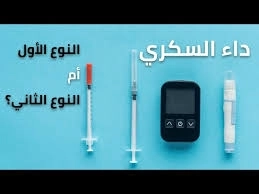
Type 1 vs. Type 2 Diabetes: What’s the Difference? – With Professor Dr. Sami Hammadi
Published on: 2025-06-26 | Written by: Dr. Sami Hamadi, Consultant in the treatment
Diabetes is one of the most common chronic diseases worldwide, but it is not a single condition.
Professor Dr. Sami Hammadi, Consultant in Diabetes and Endocrinology, explains the essential differences between type 1 and type 2 diabetes in terms of causes, symptoms, and treatment approaches.
Type 1 Diabetes: What Is It?
Type 1 diabetes is an autoimmune disease in which the immune system attacks and destroys the insulin-producing cells in the pancreas. This leads to little or no insulin production.
It is most often diagnosed in children or adolescents, though it can occur at any age.
Key Symptoms:
-
Excessive thirst and frequent urination
-
Unexplained weight loss despite increased appetite
-
Fatigue and blurred vision
-
Sudden spikes in blood sugar levels
Treatment:
According to Professor Dr. Sami Hammadi, treatment requires lifelong insulin injections, along with a carefully monitored diet and regular medical follow-ups.
Type 2 Diabetes: The More Common Form
Type 2 diabetes accounts for about 90% of all diabetes cases.
It occurs due to insulin resistance or inadequate insulin production, and is often linked to obesity, poor diet, and physical inactivity.
Common Symptoms:
-
General fatigue
-
Slow wound healing
-
Frequent infections (especially skin or urinary)
-
Tingling or numbness in the limbs
Treatment:
Professor Dr. Sami Hammadi notes that treatment usually starts with lifestyle changes, followed by oral medications, and may progress to insulin use in some cases.
How Are the Two Types Diagnosed and Differentiated?
Diagnosis depends on several factors:
-
Fasting blood sugar and HbA1c test
-
Antibody testing (especially for type 1)
-
Age of onset
-
Weight and lifestyle factors
-
Response to treatment
Final Insight from Professor Dr. Sami Hammadi
Correctly identifying the type of diabetes is crucial for effective treatment.
Professor Dr. Sami Hammadi emphasizes the importance of early diagnosis, continuous monitoring, and lifestyle management to prevent complications—regardless of the diabetes type.
With proper care, patients can live healthy and balanced lives.

